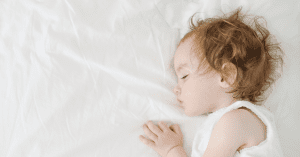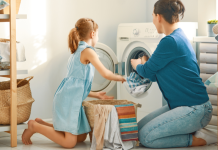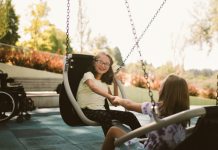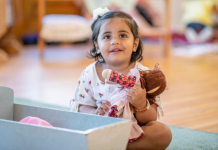When we talk about safe sleep, it usually revolves around newborns and infants. But it’s important to make sure that sleep continues to be safe for toddlers too. Some of the rules change once they turn 1 and again when they turn 2, however there are still some basic safety rules that apply to all toddlers of any age.
Room Safety
Just like infants in a crib, the crib/bed should be away from any curtains or cords. Cover exposed cords and outlets. Open sides of the bed (sides with no rails or headboard) should be at least 1 foot away from any walls or furniture (to prevent a child rolling off the bed and getting stuck!). Any furniture in the room should be anchored securely to prevent any tip overs. Consider placing baby gates in places like the top of the stairs or blocking areas that could be dangerous for your child to wander into at night.
Toddler Bed Transition
Although I am a known member of team #cribtilcollege, it’s very important to follow the directions from the manufacturer on when to make the change. Toddler beds and mattresses (firm just slightly less so than infant mattresses) are appropriate for children 15 months and older. But how do you know it’s time, other than just their age? If the crib is no longer safe for them. If the mattress is at it’s lowest setting and your child is able to climb out, it’s time to move them out. All U.S. safety approved cribs state in their manuals that once the child is over 35 inches tall they must be moved out. The reason for this is that they are able to get enough of their top heavy body over the rail without much effort and can easily topple out.
Adult Beds
Some studies have shown that adult beds are not safe for children under the age of 2. This includes but is definitely not limited to bedsharing with an adult, bedsharing with a sibling, and sleeping on an adult mattress alone. There have also been cases of toddlers being entrapped in the bed structure. This includes various “regular” adult beds, waterbeds and daybeds. It’s important to note here that it’s still important for toddlers to be sleeping on a relatively firm surface. (For the record, it appears that entrapment is far more common than overlying of a parent, caretaker, or sibling.)
Guardrails
Guardrails are a great tool to help kids from rolling out of bed, but they are not necessary. You can always start with the mattress right on the floor! And, as always, if you choose to use guardrails, make sure they meet safety standards and follow the manufacturer’s directions for use.
Blankets
Blanket and stuffed animals do not pose the same risks once your child is out of the infant stage. They can start to be introduced after their first birthday. However, it’s not recommend to use blankets in the crib and to wait to introduce them once the child has move into their toddler bed. There are many options of sleep sacks for toddlers, so if your child is still in a crib, you still have options to keep them warm. Sleep sacks are still great when they are in a bed too, and might keep them from wandering out of bed at night. When it comes to weighted blankets, it’s best to hold off until age 3.
Pillows
Pillows should not be used until after age 2! Honestly kids just don’t need them yet and they can still pose suffocation risks. When you do introduce a pillow it should be thin and firm.
Bunk Beds
The top bunk of a bunk bed or a loft bed should not be used for children under age 6. Place the bed in a corner of the room to not only help brace the bed but also prevent falls. Make sure the mattress fits snuggly and use a guardrail!










